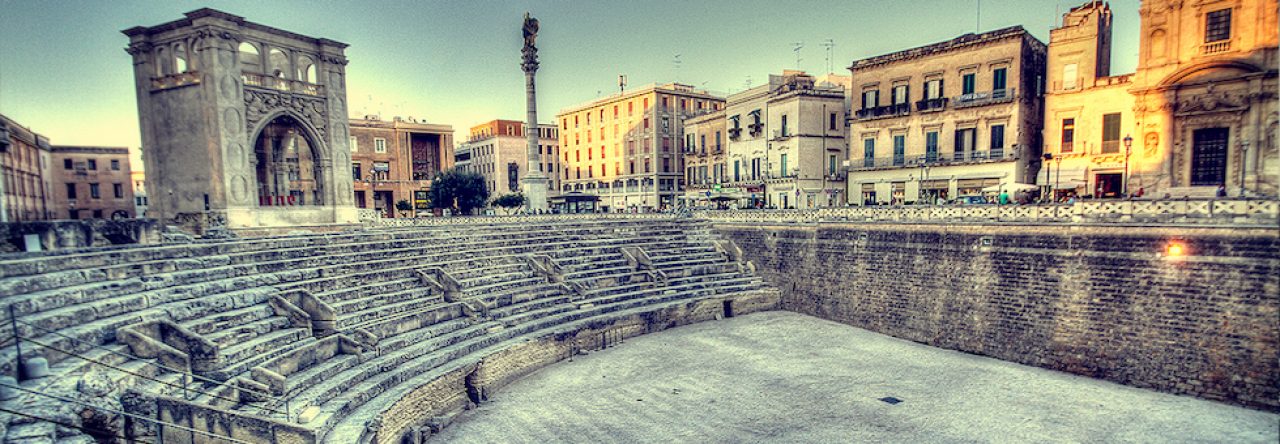SIEARW will take place in conjunction with AVSS, in the old city centre of Lecce at walking distance of hotels, workshops and main conference venues. Workshops will be held at Patria Palace Hotel (a luxury five stars hotel) whereas the main Conference will be held at the historical ‘Carl V’ Castle.
At a walking distance from the Castle there are several accommodations: tens of cheap B&B, fourhotels (4 and 5-stars) with a large number of rooms. Moreover, other accommodations are available in a short range from the conference venue.
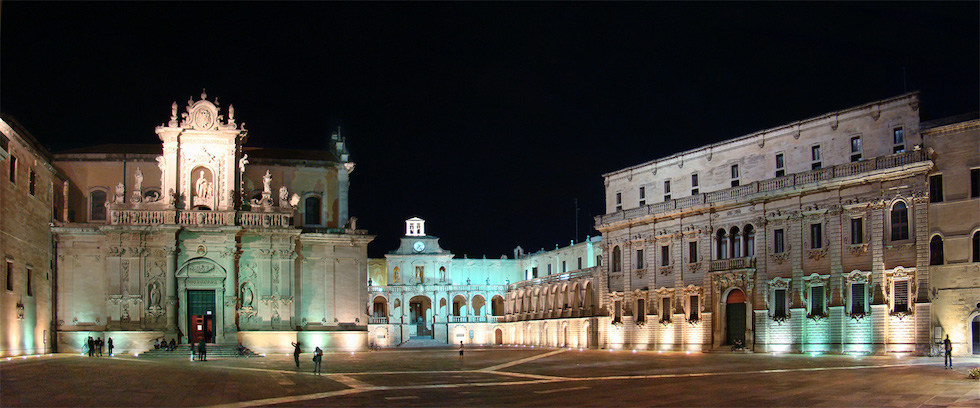
The Salento region and Lecce are the furthermost strip of land leaning out, toward the Orient, “kissed” by two seas, the Ionian and the Adriatic. A rich land steeped in history and tradition stands testimony to its natural beauty and architecture.
Lecce emerges from this enchanting scenario, with its Baroque, that seduce you with its stunning churches and antiques palaces.
For more information about getting to the venue, travel arrangements and accommodation, please, visit the AVSS2017 conference website links.
About Lecce
Lecce is a riot of cherubs; the Baroque masterpiece of southern Italy. Sometimes described as the ‘Florence of the Baroque’ or the ‘Rome of the South’, Lecce is really the only city destination in mainland Italy south of Naples which is appealing enough to attract large numbers of tourists. It lies in the region of Puglia, down at the heel of Italy’s boot, surrounded by attractive countryside, seashore and small towns.
Lecce’s history goes back a long way – you can still see ruins of a Roman theatre and amphitheatre – but the period which led to town’s current fame was the 17th century. A period of prosperity led to grand developments and the wholesale construction of palaces and churches. These buildings adapted the fashionable Baroque style to the soft local stone, with decorations and cherubs extravagantly covering facades and doorways. This local style is known as barocco Leccese (‘Lecce Baroque’).

Things to see in Lecce
Lecce has a lovely historic centre (centro storico), and travellers can easily spend a day or two exploring picturesque little lanes and finding the more far-flung Baroque churches. The town’s great artistic treasure is its architecture; in terms of other arts, such as painting, Lecce cannot really compare with northerly towns like Florence and Rome. If you are planning to stay more than a couple of days, consider hiring a car or using public transport to make day trips, or moving on to a second, contrasting base like seaside Otranto or quaint Alberobello.
The most over-the-top decoration in town is to be seen at the Basilica di Santa Croce, which has a fantastical facade to marvel at, ornamented with strange beasts and allegories. As you wander you’ll also come across a couple of unfinished churches. Visitors will gaze at Lecce’s architecture with wonder, sometimes admiration or perhaps – if cherubs really aren’t your thing – with appalled fascination. How many ways can you carve a cherub, or putto? My personal favourite is a parade of putti carrying giant letters in a dedication written across the facade of Santa Maria di Costantinopoli.

The town has two main focal points: Piazza Sant’Oronzo and Piazza del Duomo. Piazza Sant’Oronzo is the big civic heart of the town, a large square with a slightly strange and incomplete atmosphere, the ancient and the modern sitting uncomfortably together. Among the varied structures here is the town’s excavated Roman amphitheatre. The statue of a bishop perched on a column represents Sant’Oronzo, a patron saint of Lecce. The column is one of two which originally marked the end of the Roman Appian Way in Brindisi (the other is still in Brindisi). Piazza del Duomo is an unusual interpretation of that familiar Italian cathedral square. In Lecce the cathedral sits in one corner of a theatrical enclosed square; a still space in the heart of town. Alongside is the high campanile.
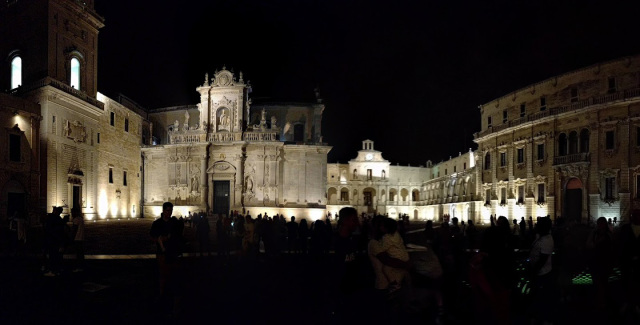
It’s worth visiting the Roman theatre and its little museum, in the centre of Lecce (Museo Teatro Romano, open Mon-Sat mornings). The town’s principal archaeological museum, the Museo Provinciale, has some interesting exhibits from Puglia’s long history, including Greek and pre-Greek ceramics. Entrance is free; the museum is located on Viale Gallipoli, not far from the railway station. It’s closed for an hour at lunchtime, and on Sunday afternoons.
Lecce has a true southern rhythm. As the day heats up, the streets empty and during the hottest afternoon hours only a handful of overheated tourists can be spotted in the historic lanes. Churches and businesses generally close for several hours. Local people re-appear as the afternoon cools into evening, but the passeggiata hour here is later than northern parts of Italy. Smart youngsters, families with small children and the elderly all promenade the streets late in the evenings, with the town coming to life between eight and midnight.
Lecce food and drink
There is a reasonable selection of restaurants in the historic centre, and others in the streets beyond. Wandering along the central Corso Vittorio Emanuele and down Via Palmieri you’ll pass a choice of places for eating and drinking.
A pasticciotto (a typical little cake of Salento peninsula born in Galatina, a village not far from Lecce) and an hot espresso in the renowned “Alvino” is a mandatory thing todo.

One shop you must visit is Gelateria Pasticceria Natale, Lecce’s finest (and most popular) ice cream and cake shop. Situated just off Piazza Sant’ Oronzo, this is a temple of chocolate, gelato and pastry pleasures, and it is open from early morning until late at night.
Around Lecce
Lecce is surrounded by many beautiful place on the seaside easily reachable renting a car. The most famous ones are Otranto (on the Adriatic coast) and Gallipoli (on the Ionian Coast).
Otranto is located on the east coast of the Salento peninsula. The Strait of Otranto, to which the city gives its name, connects the Adriatic Sea with the Ionian Sea. The harbour is small and has little trade.
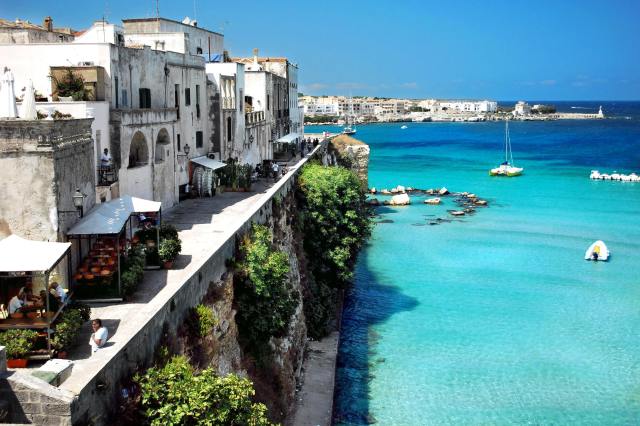
About 50 kilometres (31 mi) south lies the promontory of Santa Maria di Leuca (so called since ancient times from its white cliffs, leukos being Greek for white), the southeastern extremity of Italy, the ancient Promontorium lapygium or Sallentinum. The district between this promontory and Otranto is thickly populated and very fertile.
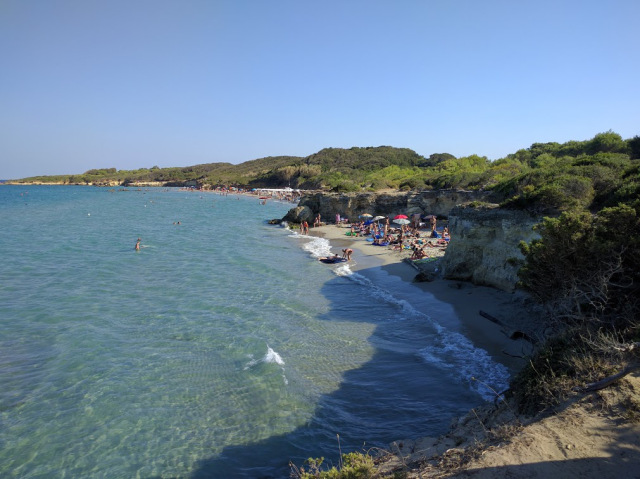
Gallipoli: is located by the Ionian Sea, on the west coast of the Salentina Peninsula. The town of Gallipoli is divided into two parts, the modern and the old city. The new town includes all the newest buildings including a skyscraper. The old town is located on a limestone island, linked to the mainland by a bridge built in the 16th century.
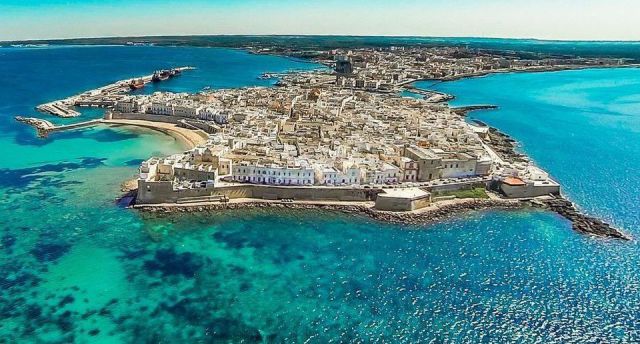
The Ionian side guests many other wonderful seaside as Porto Selvaggio, a natural reserve dedicated to Renata Fonte, a brave Italian politician that sacrificed his life defending this place by abusive urban speculation.
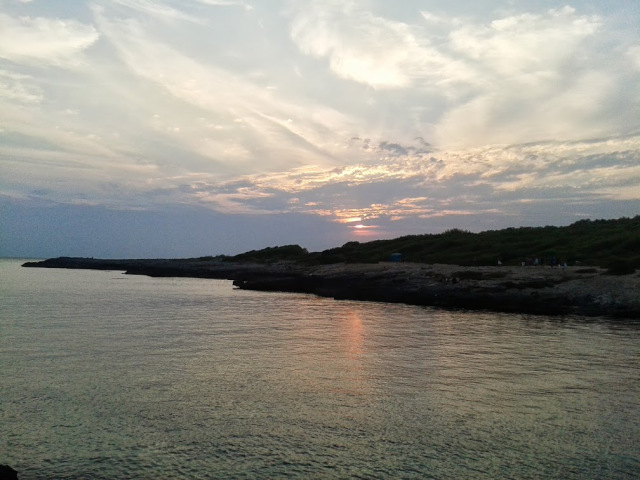
Going in the north of the Ionian side you can find Porto Cesareo, a long seaside rich of beach clubs and a wonderful sea.
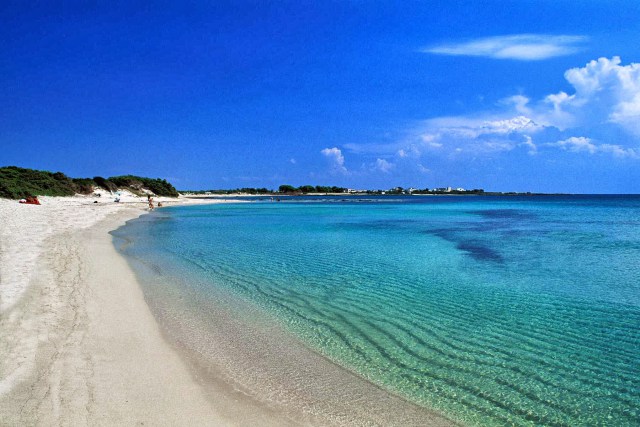
In the heart of Salento, there stands a Church that is like a grandiose stone album. Inside, it contains a whole series of pages of sacred art and of secular history among the most fascinating of 15th century Italy and among the highest, but also the least known, expressions of late Gothic. It is the basilica of Santa Caterina d’Alessandria and it is found in Galatina, a town full of baroque churches and of traces of “tarantate”.
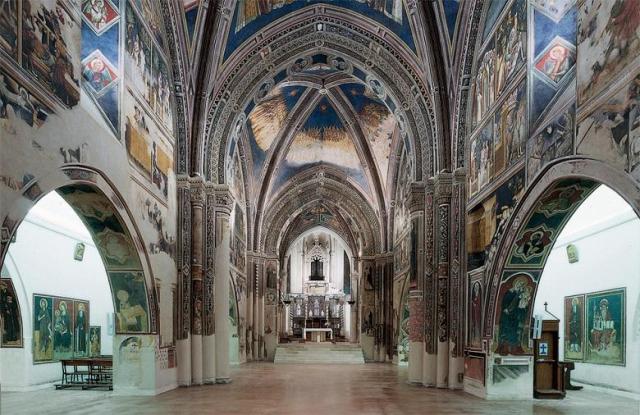
Tourist information office
There are several ‘tourist information offices’ in Lecce, some of which are really not much more than shops selling local products. Most of these offices, including one in the old castle, will provide town maps (beware of confusion caused by maps which don’t orient north at the top of the page). The most useful information office we found was based in the police HQ in Piazza Sant’Oronzo, where an English-speaking policewoman researched buses with great thoroughness.

